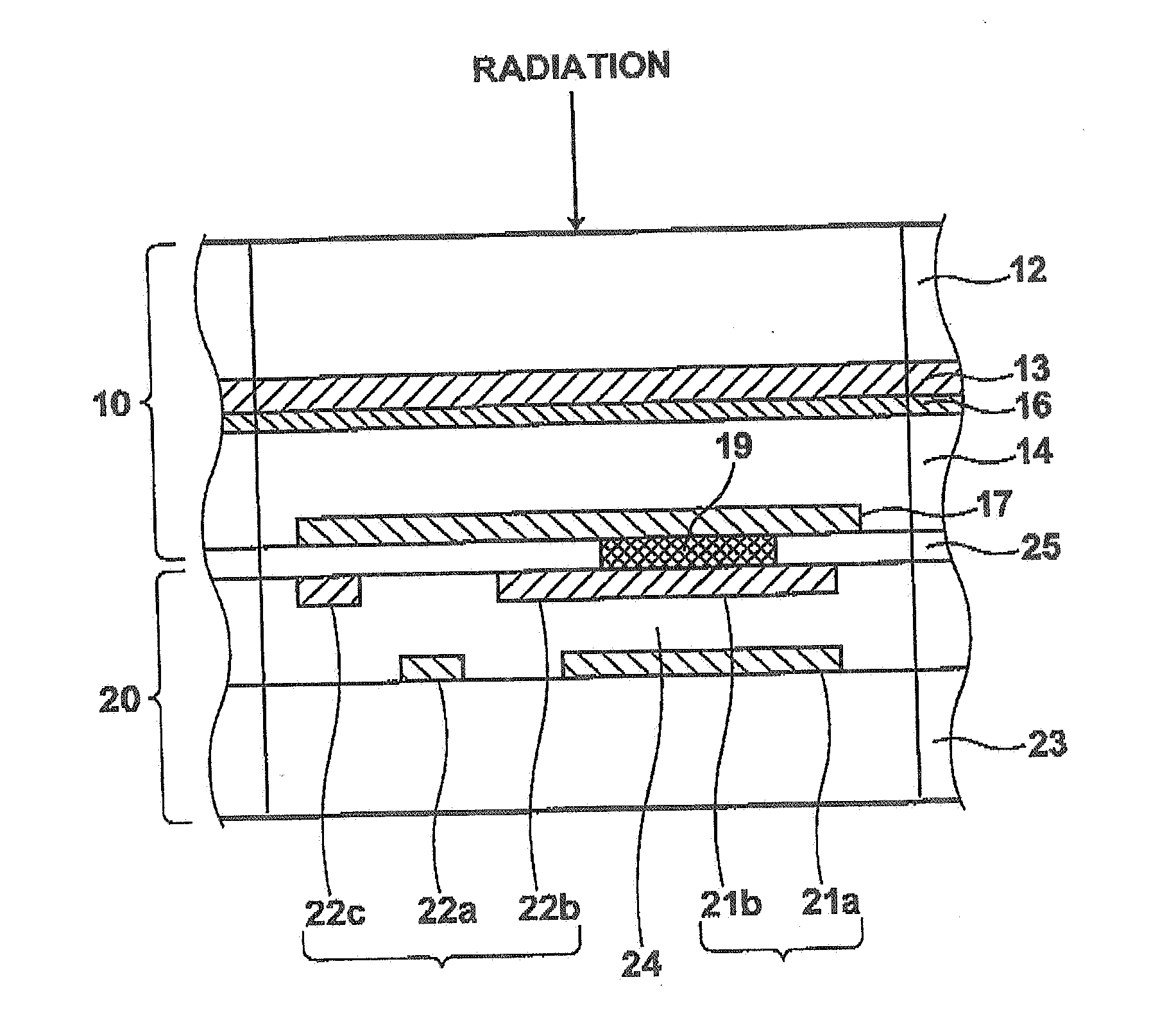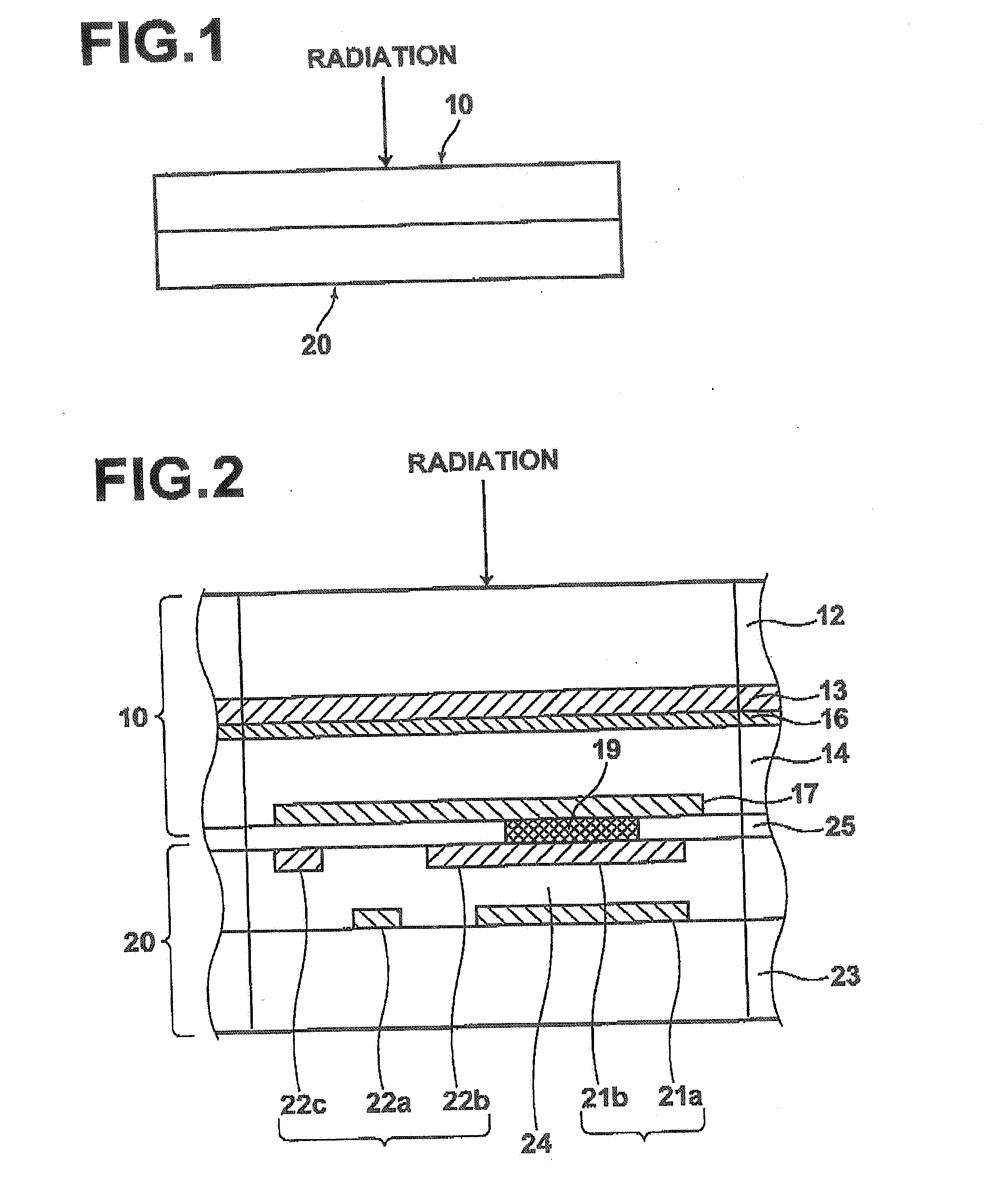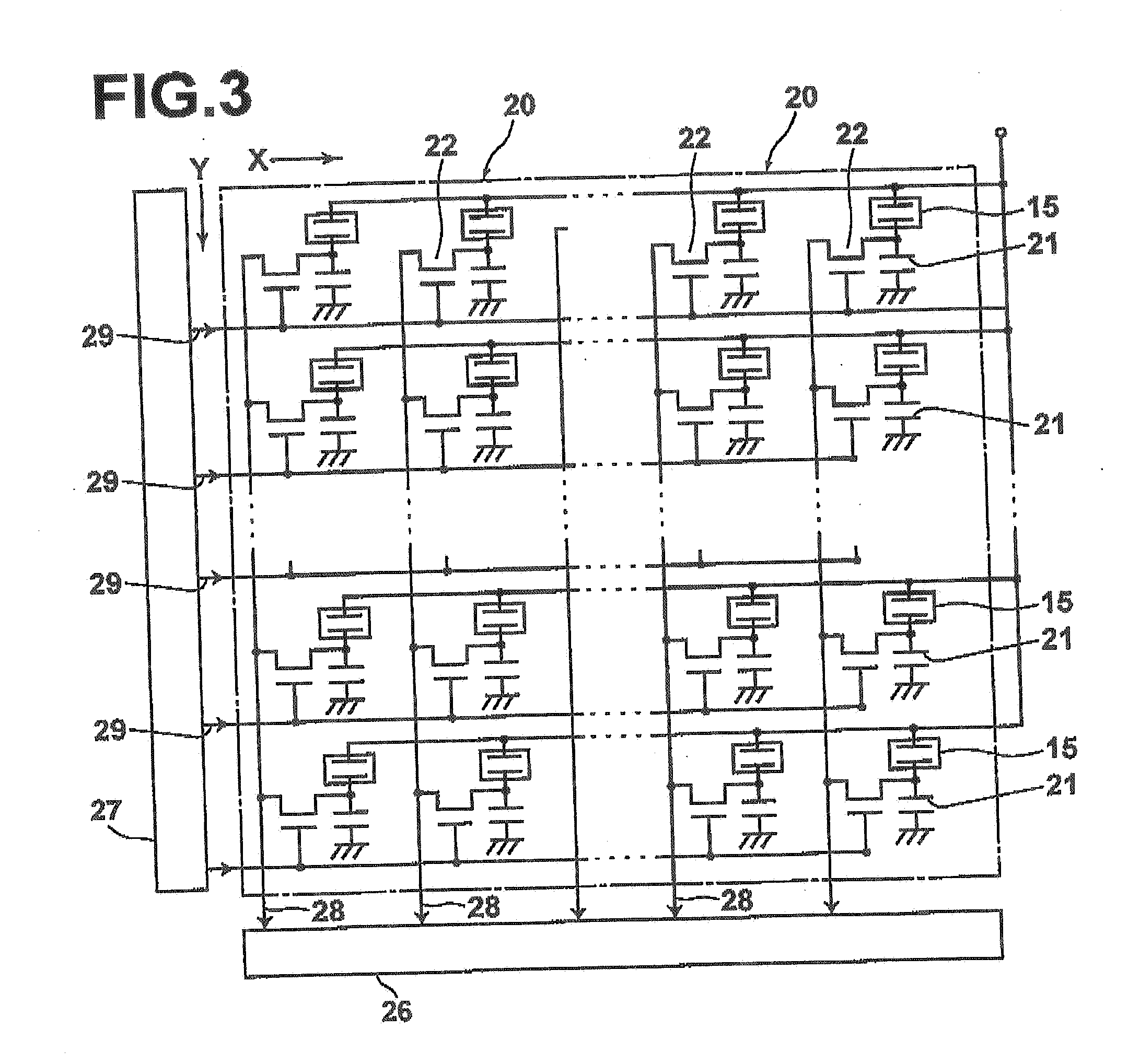Radiation detecting system
a detection system and radiation detection technology, applied in radiation measurement, instruments, measurement devices, etc., can solve the problems of large difference in thermal expansion coefficient between carrier selective semi-insulating layers, large noise generation, image defect generation, etc., to suppress crystallization and reduce dark current without deteriorating sensitivity
- Summary
- Abstract
- Description
- Claims
- Application Information
AI Technical Summary
Benefits of technology
Problems solved by technology
Method used
Image
Examples
examples
[0039]Radiation detecting systems were produced by bonding a radiation detecting portion, comprising an electric voltage imparting electrode of Au to which a bias voltage was applied, an organic resin dielectric layer of material and thickness shown in table 1, a recording photoconductive layer of a-Se 1000 μm thick and a carrier collecting electrode of ITO (In2O3:Sn) superposed one on another in this order, to the above described switching element. Further, in embodiment 3 and comparative example 1, there were respectively produced radiation detecting systems which further comprised a carrier selective semi-insulating layer of Sb2S3 between the organic resin dielectric layer and the electric voltage imparting electrode, and a carrier selective semi-insulating layer of Sb2S3 with no organic resin dielectric layer.
[0040]Dark current, deterioration in sensitivity, the thermal expansion coefficient of the organic resin dielectric layer and film stability of the produced radiation detec...
PUM
 Login to View More
Login to View More Abstract
Description
Claims
Application Information
 Login to View More
Login to View More - R&D
- Intellectual Property
- Life Sciences
- Materials
- Tech Scout
- Unparalleled Data Quality
- Higher Quality Content
- 60% Fewer Hallucinations
Browse by: Latest US Patents, China's latest patents, Technical Efficacy Thesaurus, Application Domain, Technology Topic, Popular Technical Reports.
© 2025 PatSnap. All rights reserved.Legal|Privacy policy|Modern Slavery Act Transparency Statement|Sitemap|About US| Contact US: help@patsnap.com



